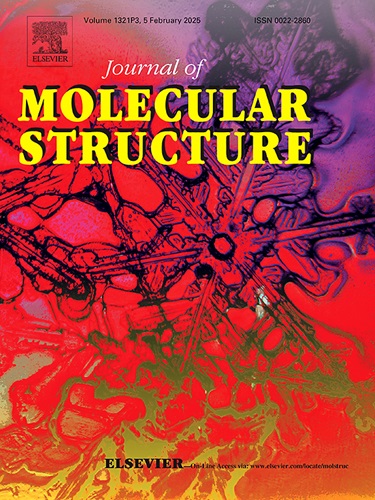从软珊瑚中分离的三种新萜类化合物
IF 4
2区 化学
Q2 CHEMISTRY, PHYSICAL
引用次数: 0
摘要
从南海软珊瑚中分离到3个新的萜类化合物,即lobolones A-C(1-3)和2个已知的相关化合物。Lobolones A(1)和B(2)是两个高度重排的c17 -trinorloba基二萜,它们是该支架的第三和第四个例子。Lobolone C(3)是一类具有罕见的双环[4.2.2]-癸烷支架的新型二萜的代表。根据化合物的光谱数据、实验和计算ECD光谱以及统计程序(CP3和DP4+分析)对化合物的结构进行了鉴定。在生物实验中,lobolone C(3)显示出对多种人类癌细胞的细胞毒活性,IC50值在5.8 ~ 29 μM之间,并诱导K562细胞剂量依赖性凋亡。本文章由计算机程序翻译,如有差异,请以英文原文为准。
Lobolones A–C, three new terpenoids from the soft coral Lobophytum catalai
Three new terpenoids, namely lobolones A–C (1–3), together with two known related compounds were isolated from the soft coral Lobophytum catalai collected in the South China Sea. Lobolones A (1) and B (2) are two highly rearranged C17-trinorlobane-based diterpenoids, which are the third and fourth examples of this scaffold. Lobolone C (3) is representative of a new class of diterpenes possessing an uncommon bicyclo [4.2.2]-decane scaffold. The structures of these compounds were elucidated based on their spectroscopic data, experimental and calculated ECD spectra, and statistical procedures (CP3 and DP4+ analysis). In bioassay, lobolone C (3) demonstrated cytotoxic activity against several human cancer cell lines with IC50 values ranging from 5.8 to 29 μM, and induced cell apoptosis in K562 cells dose dependently.
求助全文
通过发布文献求助,成功后即可免费获取论文全文。
去求助
来源期刊

Journal of Molecular Structure
化学-物理化学
CiteScore
7.10
自引率
15.80%
发文量
2384
审稿时长
45 days
期刊介绍:
The Journal of Molecular Structure is dedicated to the publication of full-length articles and review papers, providing important new structural information on all types of chemical species including:
• Stable and unstable molecules in all types of environments (vapour, molecular beam, liquid, solution, liquid crystal, solid state, matrix-isolated, surface-absorbed etc.)
• Chemical intermediates
• Molecules in excited states
• Biological molecules
• Polymers.
The methods used may include any combination of spectroscopic and non-spectroscopic techniques, for example:
• Infrared spectroscopy (mid, far, near)
• Raman spectroscopy and non-linear Raman methods (CARS, etc.)
• Electronic absorption spectroscopy
• Optical rotatory dispersion and circular dichroism
• Fluorescence and phosphorescence techniques
• Electron spectroscopies (PES, XPS), EXAFS, etc.
• Microwave spectroscopy
• Electron diffraction
• NMR and ESR spectroscopies
• Mössbauer spectroscopy
• X-ray crystallography
• Charge Density Analyses
• Computational Studies (supplementing experimental methods)
We encourage publications combining theoretical and experimental approaches. The structural insights gained by the studies should be correlated with the properties, activity and/ or reactivity of the molecule under investigation and the relevance of this molecule and its implications should be discussed.
 求助内容:
求助内容: 应助结果提醒方式:
应助结果提醒方式:


